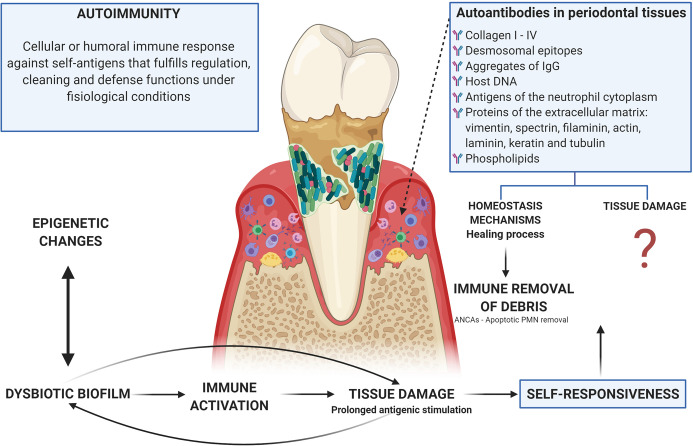Figure 4.
Autoimmunity in periodontitis: tissue damage related or homeostasis mechanisms? There is an evident relationship between the dysbiotic microbiota, the activation of inflammatory mechanisms, and the tissue damage observed in periodontitis, which leads to prolonged antigenic stimulation due to tissue breakdown with the release of matrix proteins. In turn, microorganisms use these products of tissue damage as a nutritional source. This persistence of both self and exogenous (microbial) antigens leads to the occurrence of autoimmunity, which can be understood as a mechanism by which debris generated by tissue damage are removed through the generation of autoantibodies (including ANCAs as a mechanism for the cleaning of apoptotic bodies after the activation of phagocytic cells) or as a damage machinery, although the evidence for the participation of autoimmune mechanisms in the tissue damage observed in periodontitis is poor and lacking analysis. Additionally, microorganisms and their products can alter the activity of epigenetic enzymes at the same time that these epigenetic changes can induce dysbiosis, thus epigenetics being a determining factor in the occurrence of autoimmunity due to a direct relationship with the breakdown of immunological homeostasis.

